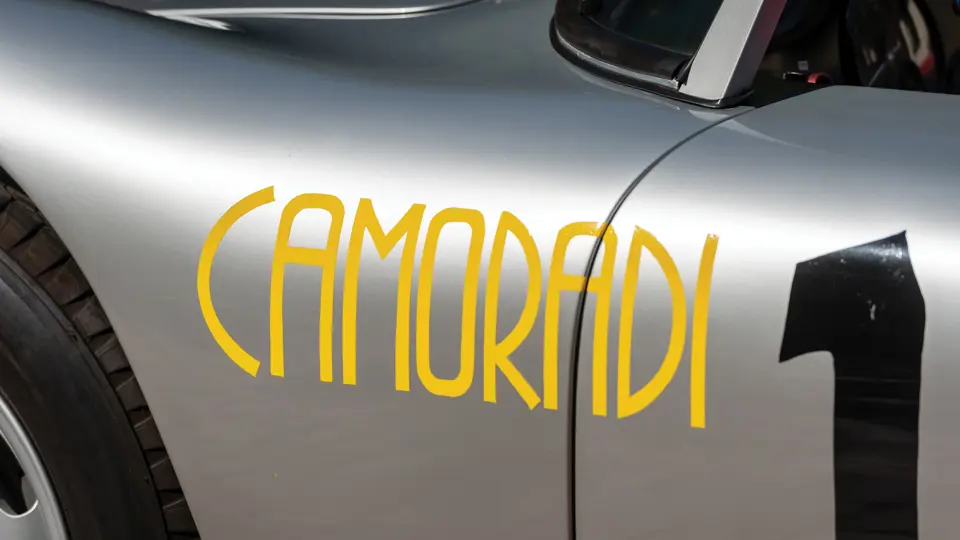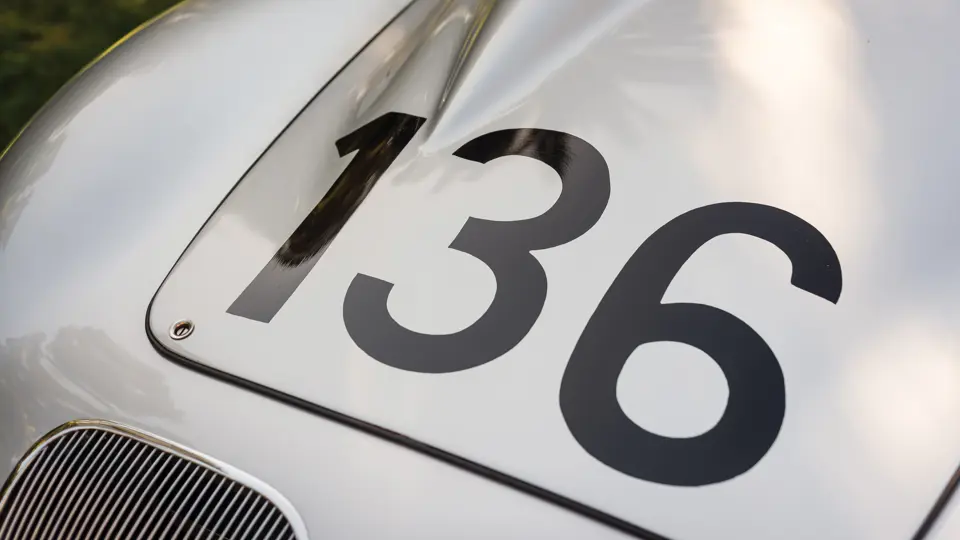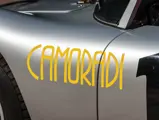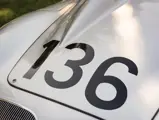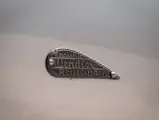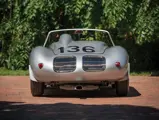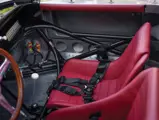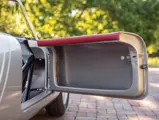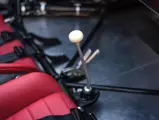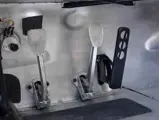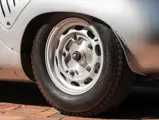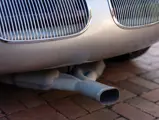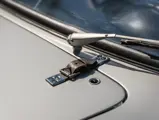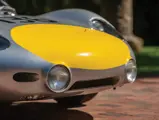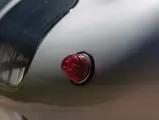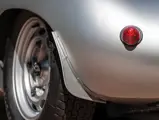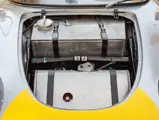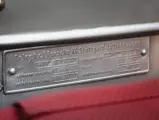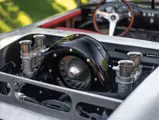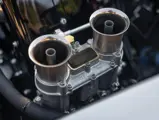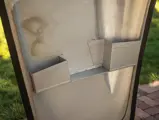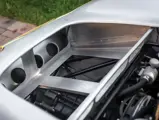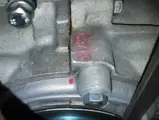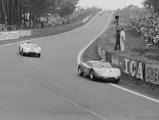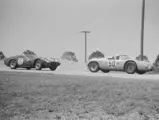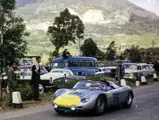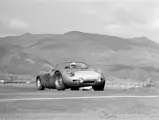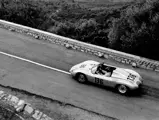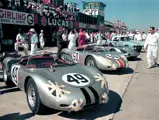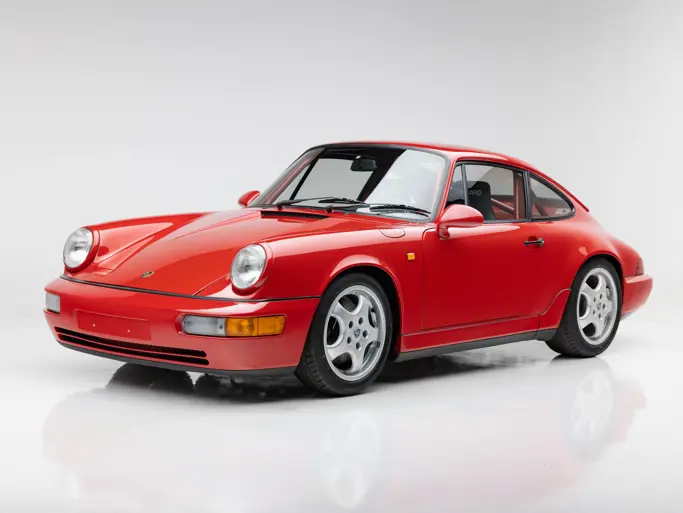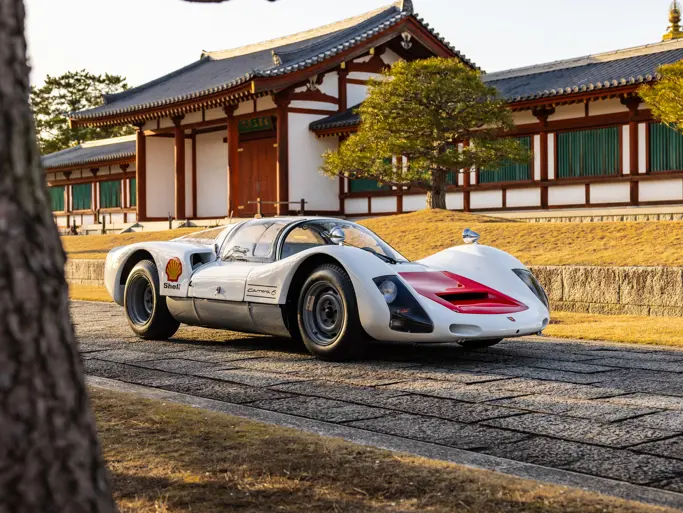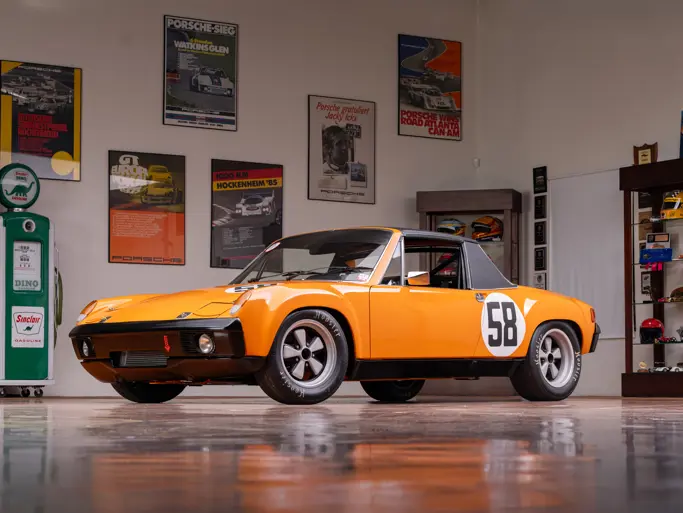
1960 Porsche 718 RS 60 Werks
{{lr.item.text}}
$5,120,000 USD | Sold
{{bidding.lot.reserveStatusFormatted}}
- The ultimate iteration of Porsche’s legendary aluminum spyder racing cars
- The only example of four original Works RS 60s to likely become available
- Factory racing provenance in 1960–61, with legendary drivers Stirling Moss, Graham Hill, Dan Gurney, Jo Bonnier, Bob Holbert, and Hans Hermann
- Raced at the 24 Hours of Le Mans, 12 Hours of Sebring, Targa Florio, Nürburgring 1000 KM, and the Bahamas Speed Week
- Extensive recent restoration by marque experts Urs Gretener and Paul Willison
Beginning with the legendary Type 550 of 1953, Porsche’s competition spyders are nothing short of legendary—an iconic form of exceptionally sophisticated engineering with the racing pedigree and accolades to set the racing world on fire in the 1950s. From the 550 that introduced the world to the Type 547 dual overhead-cam flat-four engine (renamed the Carrera motor after dominating the Under 1,500 cc Class at the 1953 Carrera Panamericana road race) through the Type 718 RSK, Porsche showed the mettle of German engineering in the face of large-displacement Italian competitors.
In January 1960 Porsche introduced the final evolution of its Carrera-based racing spyder, the RS 60. Despite being officially classified as a Type 718, the RS 60 improved upon its direct predecessor with a wider cockpit, independent wishbone rear suspension, uprated brakes, and 15-inch wheels. The car featured a wheelbase four inches longer than the 718 RSK, which combined with smaller wheels and an advanced suspension to result in more predictable and preferable handling dynamics. Power for the RS 60 continued to come from a variety of four-cam engines. Karrosserie Wendler developed its prior spyder coachwork with cues like a framed windscreen and luggage platform (mandated by the FIA) and subtle modifications to the nose, doors, and head fairing.
Eighteen RS 60 examples were ultimately built, of which 14 were sold to privateering customers and stamped with chassis numbers commencing with 718-051. Porsche retained four cars for its factory efforts. These examples were denoted with a slightly different numbering sequence, ranging from 718-041 to 718-044. As Works-prepared cars, these four RS 60s were built with features unavailable on the customer cars, such as separate left and right front torsion bars (similar to the 718/2 Formula 2), integrated driving lamps, and a flat-black dashboard mounted with an exposed fuse box. With such technical advances, the RS 60 proved to be the first Porsche capable of threatening larger-displacement classes, often competing for outright wins against perennial favorites such as Ferrari.
From the larger-diameter chassis tubes and reinforcement for torsional rigidity, to the aggressive four-cam engine, 718-044 was optimized for such endurance races as Le Mans and the Targa Florio. Along with the three other Works racing cars, it would take the racing world by storm, piloted by a legendary series of drivers over the course of the season.
CHASSIS NUMBER 718-044
Chassis no. 718-044 is one of these Works examples and was the final factory-campaigned RS 60 built. In fact, its racing history is corroborated by considerable documentation, with multiple letters from Jürgen Barth, who attests, “The Porsche 718-044 was a factory race car which had its first entry in the 1960 Le Mans 24-Hour race…It is worth being purchased due to its brilliant history.” Joined by two sister cars, as well as a Carrera Abarth GTL, 044 wore #33 and was piloted by the Swedish sports car and Grand Prix racing phenom Jo Bonnier and future motorsports triple crown holder Graham Hill. The three RS 60 examples were equipped with varying displacements of the 547/3 Carrera motor, and 718-044 received a 1,606 cc version that qualified it for the 2-liter class (consequently permitting the use of a larger fuel tank). The factory Le Mans cars also featured a number of coachwork tweaks, with an elevated rear deck lid and tall Plexiglas windows aping the appearance of a roofless coupe. In fact, the aerodynamic advancement was such that the Works cars were clocked during practice nearly 10 mph faster than the customer RS 60s. As the only Works RS60 to factory race with a high-torque 2-liter type 587 engine, 718-044 was stiffened with extra-large-diameter chassis tubes. As such, 718-044 may have a chassis which is unique from the other three Works cars.
Chassis no. 718-044 started from 54th place on the starting grid Saturday afternoon at the Circuit de la Sarthe, but by 6:00 a.m. next morning it had advanced to 14th place overall and was leading the 2-liter class. Unfortunately, a blown gasket during the 18th hour precipitated engine failure, and the car was unable to finish the race.
The RS 60 was shelved for the remainder of Porsche’s 1960 factory campaign, but it returned to action at the 12 Hours of Sebring in March 1961, where it was again joined by a Works sister car, as well as six RS 60 privateer entries. Equipped with a larger 1,678 cc Type 719/4 engine, 044 was driven by legendary Grand Prix and endurance racer Hans Hermann and Edgar Barth through the first seven hours before they were replaced by the faster pairing of Jo Bonnier and a young Dan Gurney (whose car, chassis 043, had retired early) early in his exceptional racing career as a Porsche factory driver for the season. The latter duo faired only slightly better, though, as a broken camshaft forced them out of the race about 90 minutes later.
The car’s most spectacular episode occurred a month later at the Targa Florio, where the spider was officially entered by Lucky Casner’s Camoradi team, though it was prepared and maintained by the Porsche Works mechanics. Graham Hill teamed with the immortal Stirling Moss, who later extolled the RS 60’s virtues in his autobiography, My Cars, My Career, recalling, “That was one morning I woke up and could say to myself, ‘For today’s race you have got the ideal car…’” Stirling, after all, was also the ideal driver for this ideal car—a former winner of the race in 1955, he also still held the lap record with an Aston Martin in 1958 and of course to this day is considered one of, if not the, finest and most accomplished racing drivers of any era.
His commentary on the Targa Florio, however, was no exaggeration, as the RS 60 was tailor-made for such a race. With its hundreds of switchbacks and sharp turns, as well as elevation changes, the ideal sports racing car required a 2-liter torquey motor with exceptional agility and handling, and the RS 60 fit the bill absolutely perfectly. In fact, the crowd took notice as Stirling Moss was lapping the circuit in practice at only 40 minutes, 28 seconds—a full three minutes faster than the Von Trips’ Ferrari. To this day, 718-044 retains a Porsche-sourced 2-liter Type 587/3 period racing engine, 90505.
After the first four laps, Moss established a strong lead of nearly a minute and a half over the 2nd-place RS 60 of Bonnier. As he recounted in his memoirs, “Our race was just perfect for the course, we could hardly have wished for a nicer, more competitive car.” Hill then proceeded to give up the lead to the Ferrari 246 SP piloted by Wolfgang von Trips and Olivier Gendebien. Moss returned to reclaim 1st place and held the lead by 65 seconds as he entered the final lap. Unfortunately, just eight kilometers from the finish line, 044’s differential seized, and Moss was out, giving the victory to Ferrari. Moss himself wrote this was one of his greatest races, and even Von Trips agreed, passing the winner’s trophy to Moss at the awards dinner.
Chassis no. 718-044 made a final appearance as a Works-campaigned racer at the 1000 KM of Nürburgring in May 1961, where it was again fitted with the 1,678 cc engine and driven by Barth and Hermann. The car completed only a few laps, though, before a burned piston forced an early retirement again.
RACING IN NORTH AMERICA
Following its important Works campaign through the beginning of 1961, the RS 60 was dispatched to North America and entered by Porsche Cars at the Mosport Player’s 200 in June, where Jo Bonnier finished 2nd. Chassis 718-044 was then sold to Bernhard Vihl of Clifton, New Jersey, a privateer who owned a succession of Porsche racing spyders. Vihl was notably a principle financier of budding driver Bob Holbert, who would go on to be instrumental in Porsche’s North American racing endeavors and the company’s corresponding sales.
Holbert raced several Porsche spyders during this period, and some confusion has resulted over the precise record of various chassis numbers. The car was quite distinct, however, as it was modified early in Vihl’s ownership with an anteater-long nose. In combination with the rare dash-mounted fusebox, the spyder is visually distinguishable from other RS 60 examples and is therefore easily identifiable as the car that Holbert drove to two overall victories and a class win during the Bahamas Speed Week in late 1961. According to racing authorities, throughout 1960–1961, 718-044 participated in 21 races with four outright wins and six class wins. The podium finishes with 044 catapulted Holbert to the E class championship.
After passing in 1962 to mechanic Hans Ziries, the RS 60 was sold in 1965 to hot-rod collector Clarence Catallo of Dearborn, Michigan, who funded the purchase by trading in his best-known car, the ’32 Ford coupe “Silver Sapphire” that was pictured on the Beach Boys album Little Deuce Coupe. In 1978 the Porsche was acquired by marque collector Warren Eads of Rolling Hills Estates, California, and he commenced a significant restoration, entrusting the engine to Carrera specialist Al Cadrobbi and the body freshening to metal experts Don Borth and Jack Hagemann. After completing refurbishment in 1982, the RS 60 was raced at vintage events through 1990, and it was then treated to eight years of attention from spyder specialist Urs Gretener.
Since 1998 the important Porsche has been fastidiously maintained while passing through several major collections, and noteworthy appearances have included the 1998 Monterey Historic Races, the inaugural Le Mans vintage races in June 2001, the 50th Porsche Parade Historic Exhibition at Hershey in August 2005, the Rennsport Reunion III at Daytona International Speedway in November 2007, and the Goodwood Revival in September 2009. The car has also been featured in numerous publications and marque books, including a Road & Track comparison article in May 2000 authored by Phil Hill.
The current owner, likewise a distinguished and active collector, acquired the car in 2015 and immediately embarked on a no-expense-spared restoration, employing only the very best and most respected Porsche experts. Longtime Porsche steward Urs Gretener conducted the restoration work, while the rebuild of the sophisticated engine was entrusted to four-cam expert Paul Willison. From the cosmetic elements to the mechanical details, absolutely nothing was left untouched, and the car was refinished in its Targa Florio livery. Thereafter the car has always been maintained, quite literally, in race-ready condition. It was campaigned in 2018 upon its completion at the Rennsport Reunion by endurance racing veteran Johannes van Overbeek, widely regarded as one of the finest Porsche racing drivers in the world. The owner further attests to the fact that the car is regularly driven and enjoyed and remains on the button and well sorted, which is of particular interest and desirability in light of the difficulty and waiting time likely required to currently and properly rebuild a four-cam Porsche engine. As such, this car’s drivability is especially remarkable and desirable, particularly for taller drivers, in light of the car’s longer wheelbase and taller windscreen, which is a slight deviation from the period-correct design in size.
As it is presented, the car has been fitted with its original red-rimmed steering wheel, clutch pedal, and dead pedal. Furthermore, it is accompanied by a wide assortment of spare parts, including the original oil tank, Plexiglas windshield with frame, seat, wheels, tires, extensive suspension parts and much more, for which a detailed listing is available for review.
THE OPTIMAL DRIVER’S COMPETITION PORSCHE
The presentation of chassis 718-044 is truly and almost certainly an unrepeatable opportunity. Not only is it the final example of only four Works racing Porsches with staggering racing pedigree to its credit, but it is quite likely the only example of the four to ever become available in the near future, if ever. Its sisters reside in the Porsche Museum, JSL Motorsport Collection, and the Miles Collier Collections—long-term, exceptionally highly regarded collections in their own right. Aside from the unrepeatable opportunity of 718-044’s offering, it should also be pointed out that it is certainly the final and arguably the finest evolution of the Porsche aluminum spyders of the 1950s. It had the most advanced engine, a stiffer and more refined chassis, longer wheelbase, uprated brakes, a wider cockpit, and independent wishbone rear suspension, all of which marked not only a considerable improvement over its predecessor in terms of competition readiness but, today, for the active collector, it also represents a car that offers a superior driving dynamic and is considerably more comfortable to pilot for taller drivers.
Whether it be Ferrari, Aston Martin, Mercedes-Benz, or Porsche, the collectability for Works race cars will remain the ultimate prize for collectors young and old. Cars owned and raced by the factory are the rarest and most advanced of their respective models. These examples often remain in institution-like collections and hardly ever change hands. The chance to acquire one is generally unheard of and may take decades of patient waiting. Chassis 718-044 sits far above its predecessors and privateer peers. It offers the best in technology, the ultimate blend of mechanical ability and design, and was at the pinnacle of what Porsche had to offer.




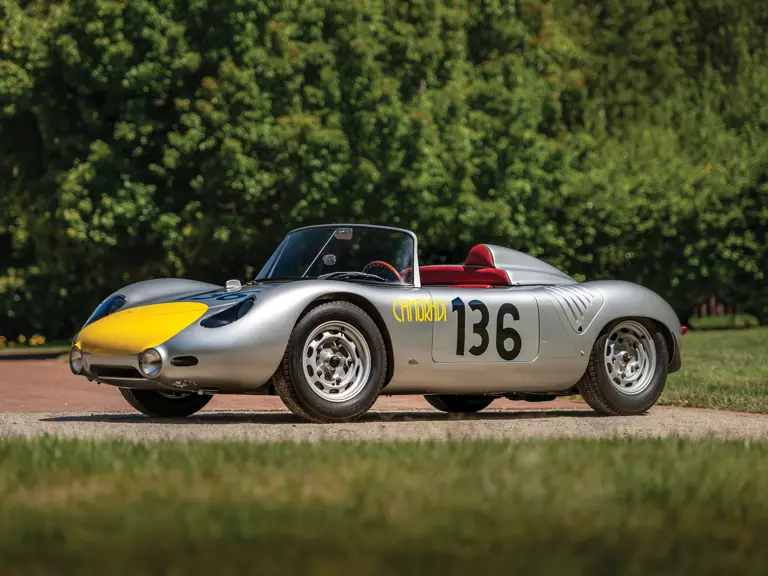
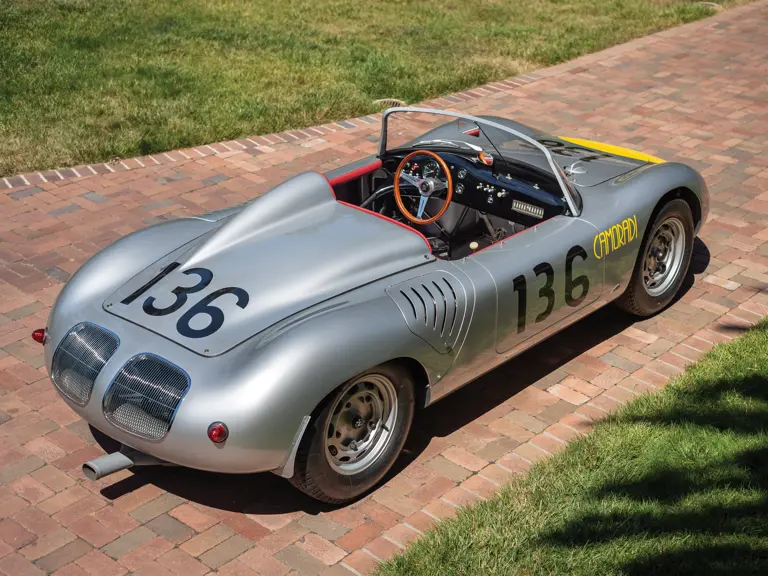
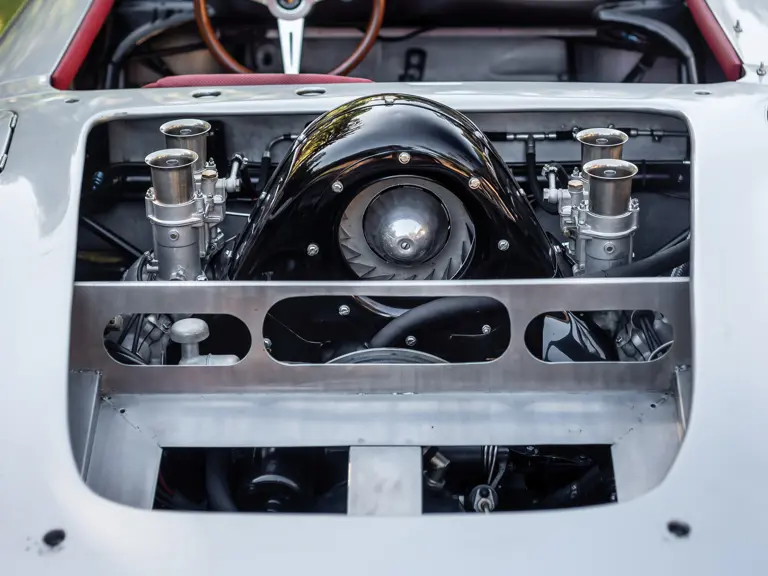
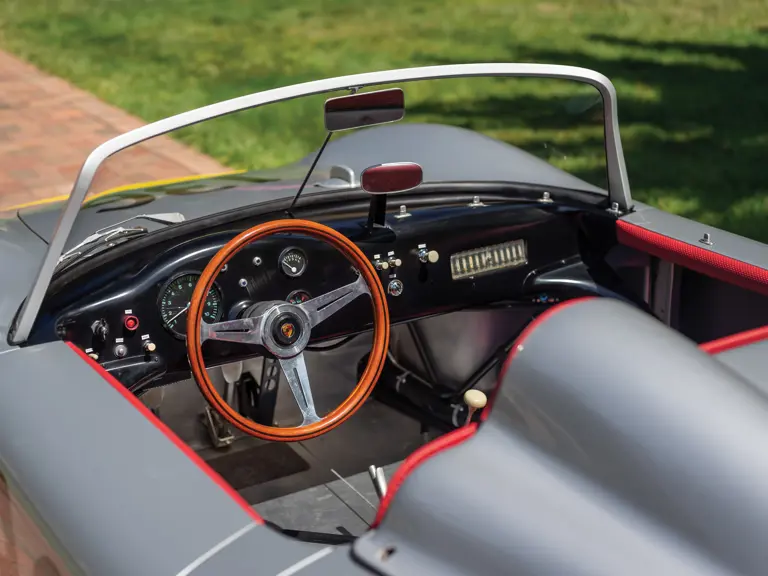
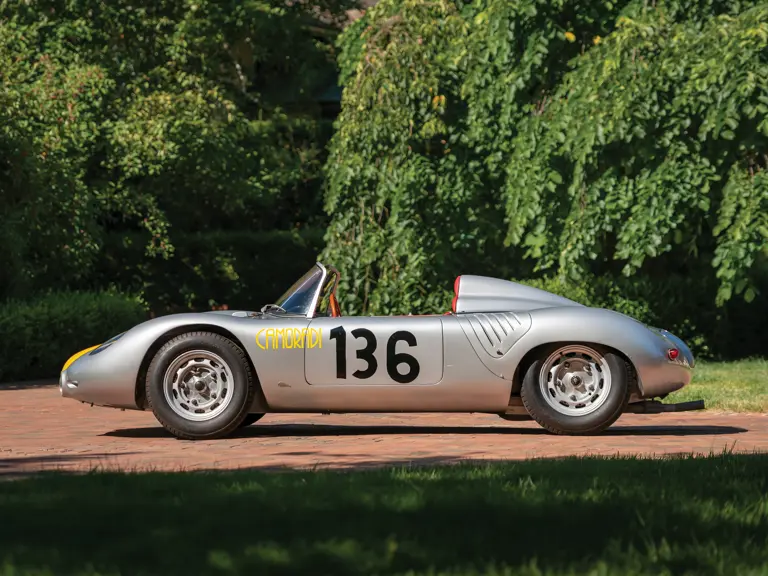

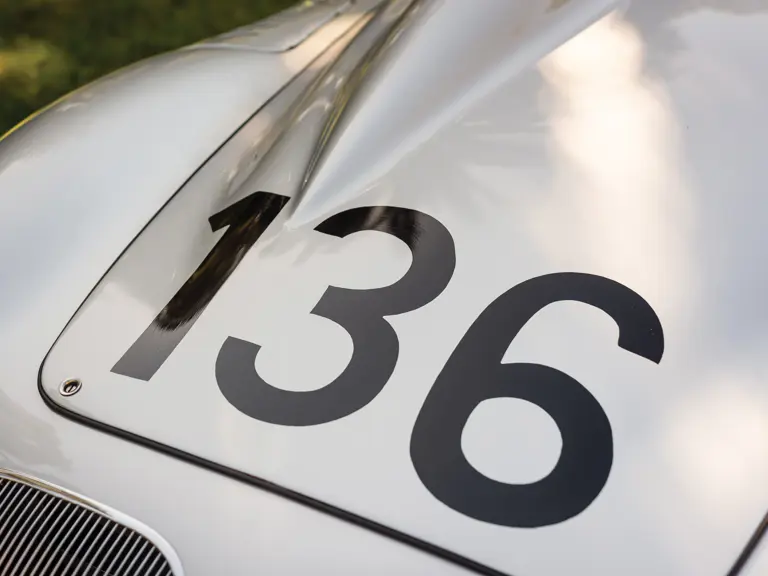

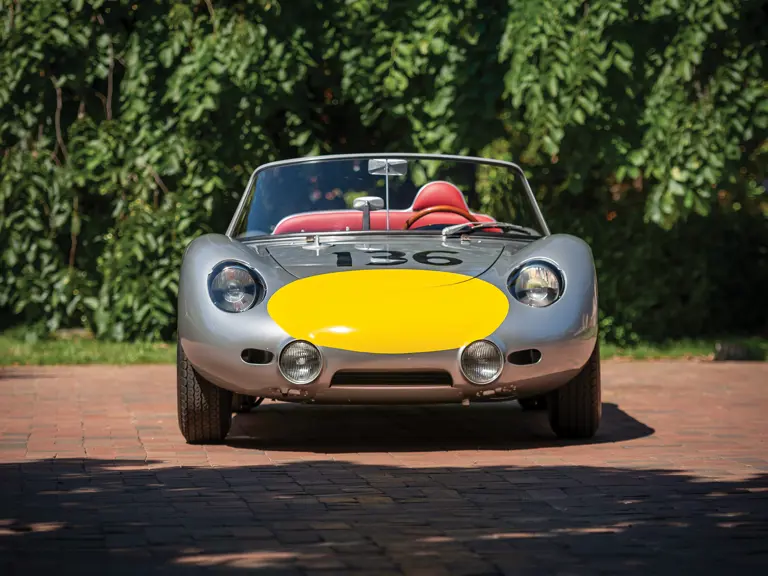
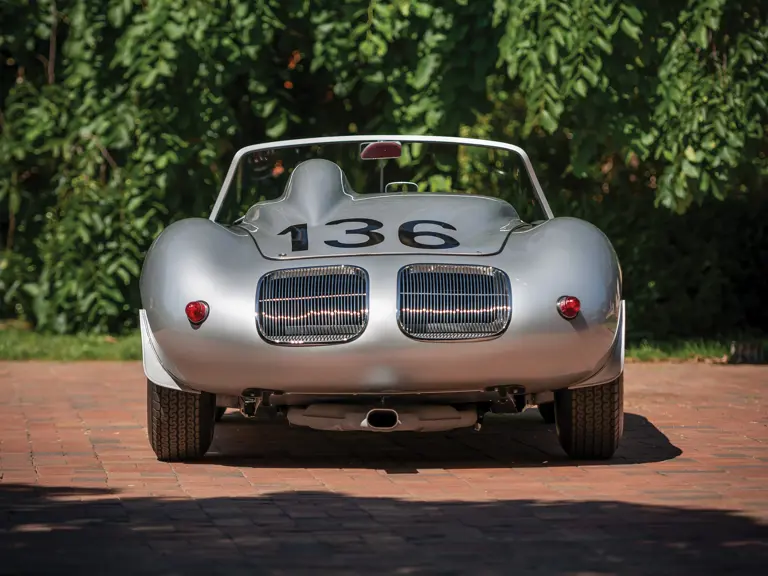
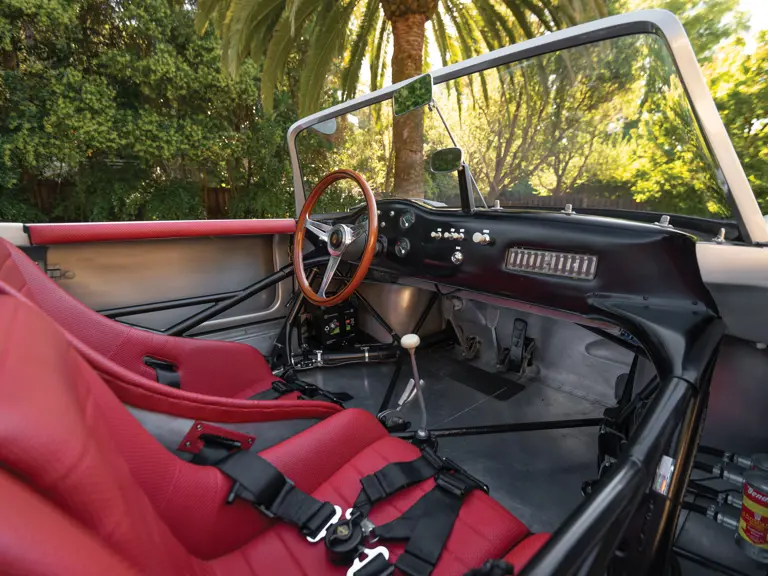
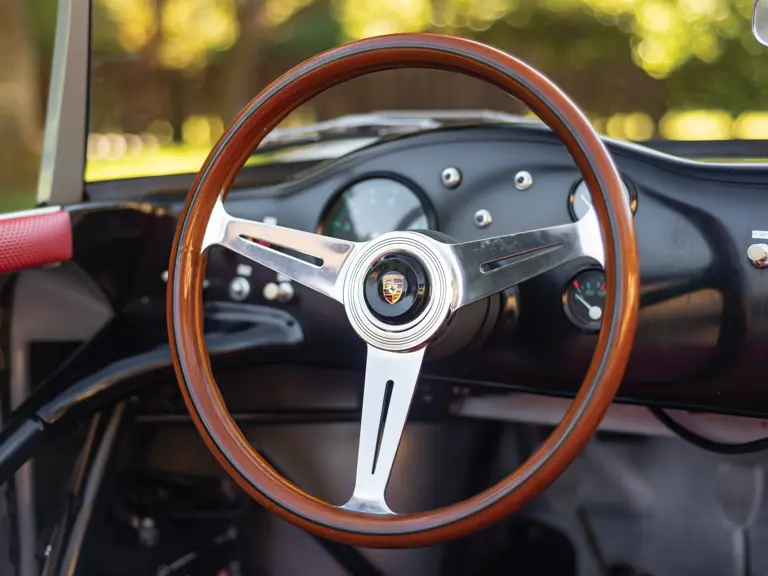

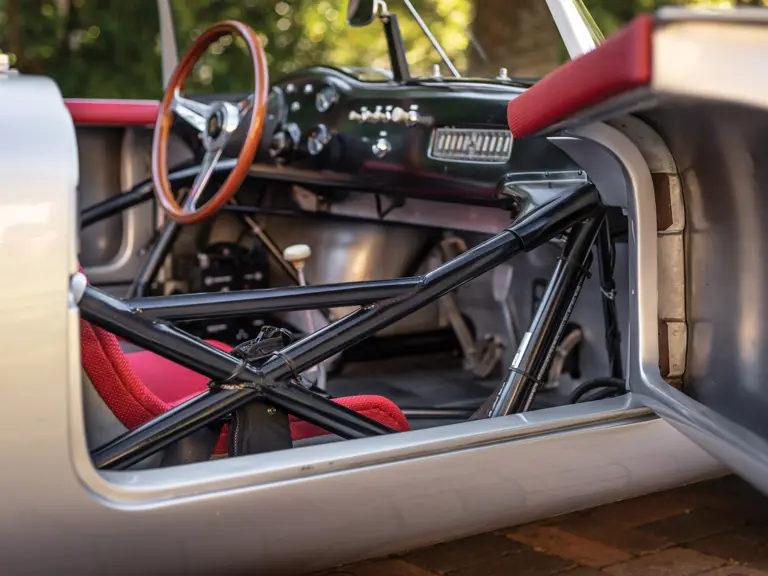
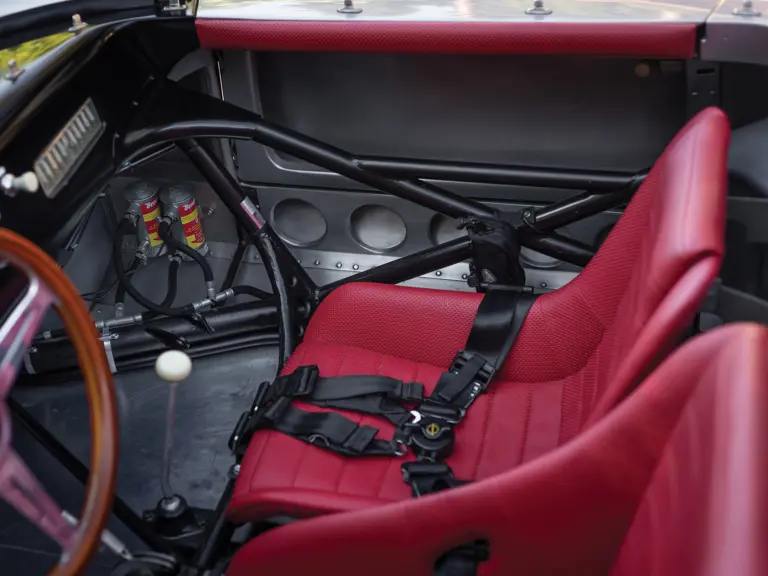
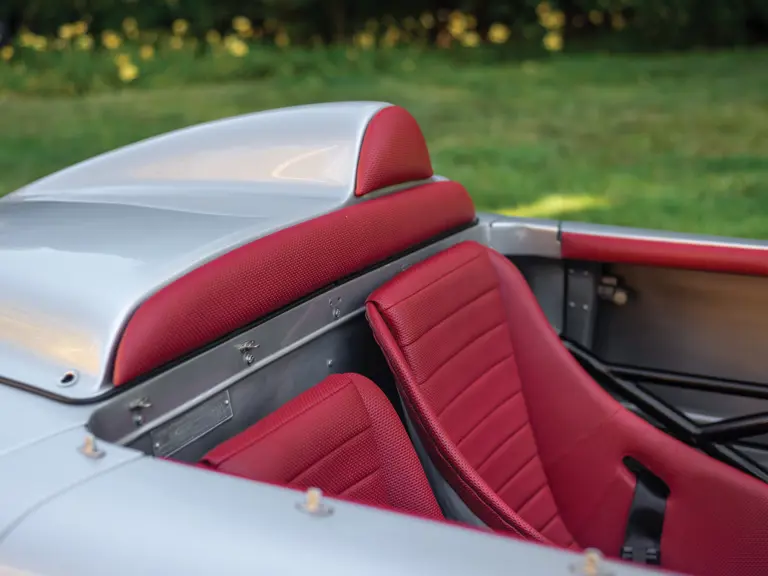
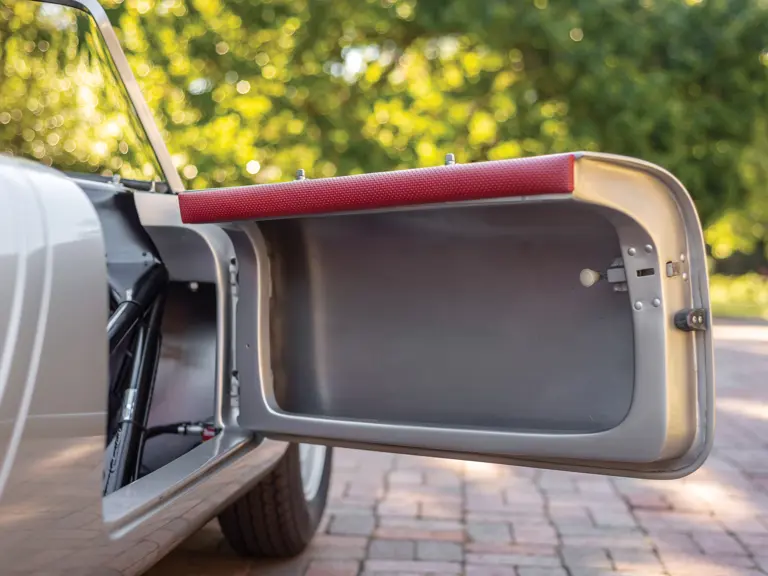
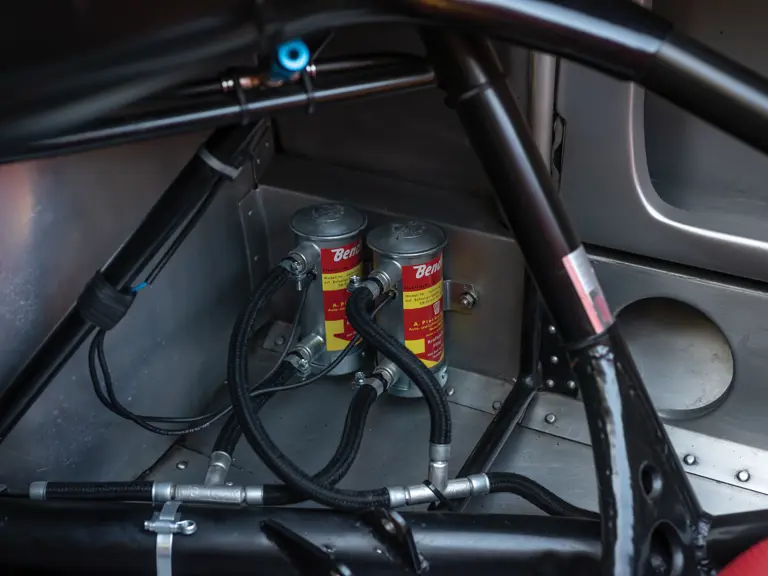

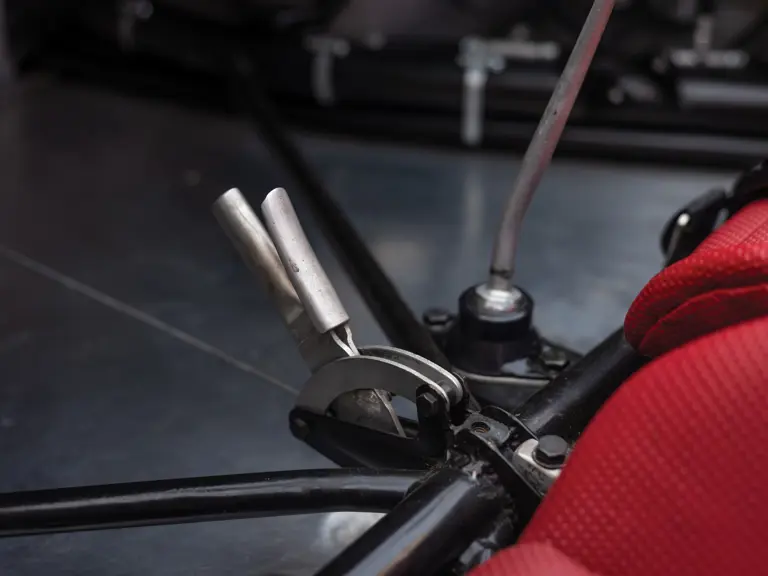
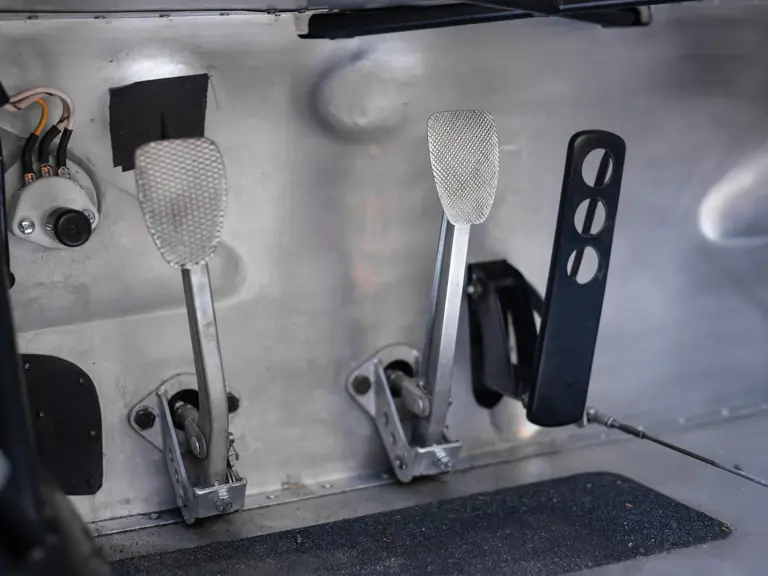


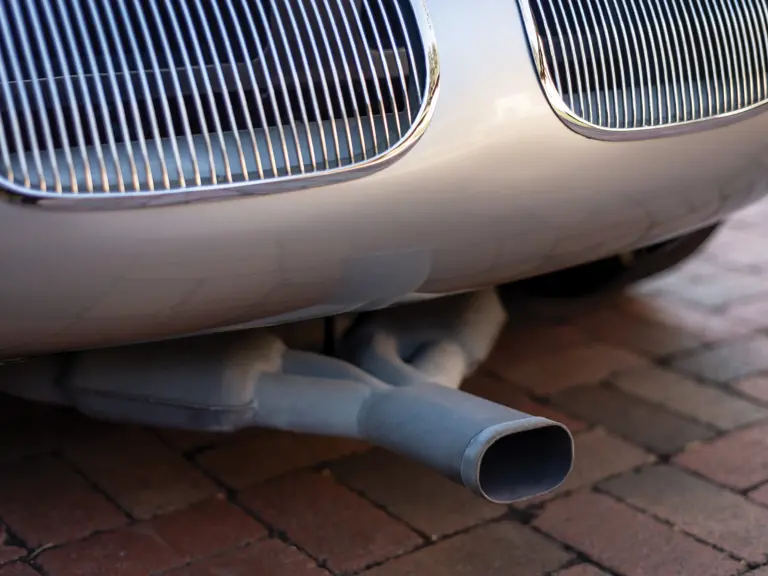
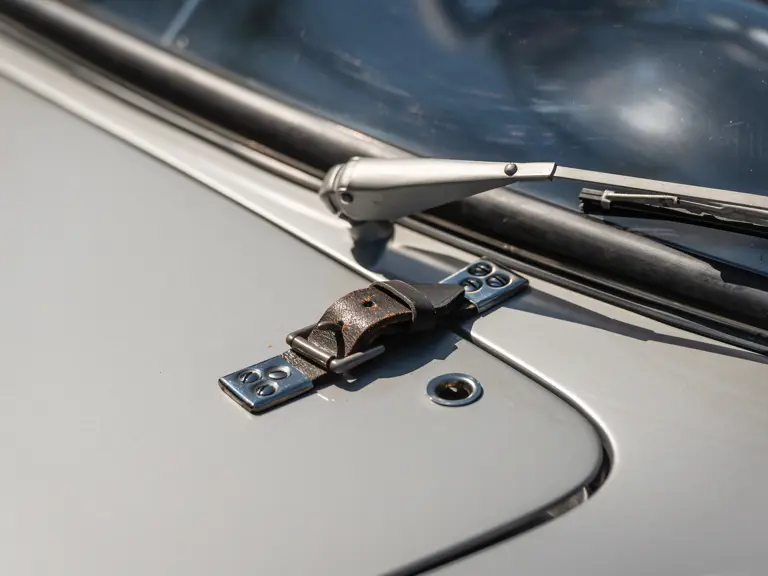

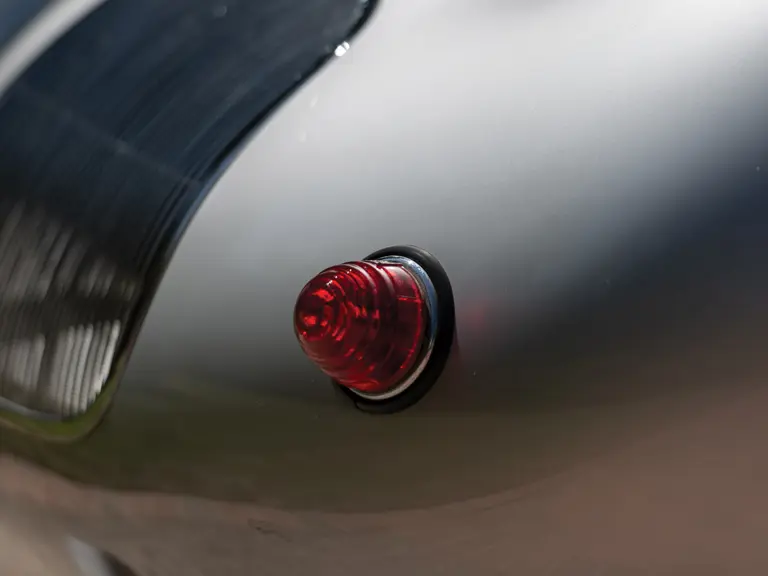
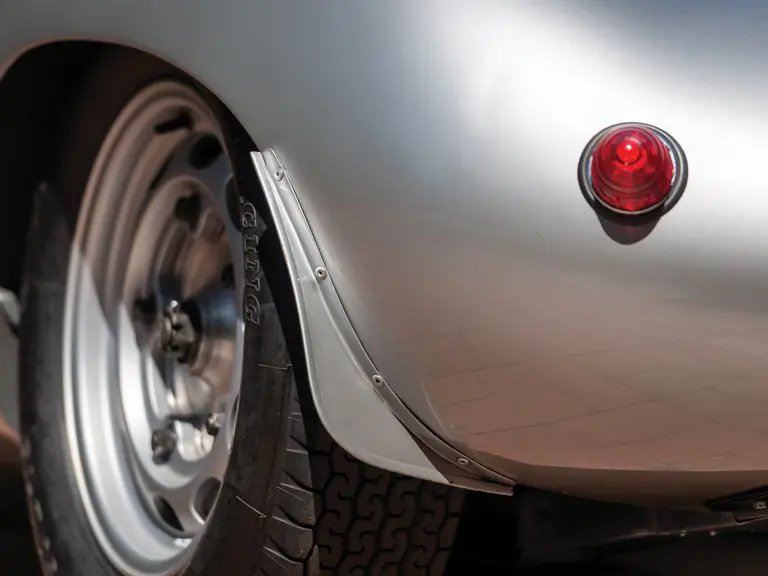

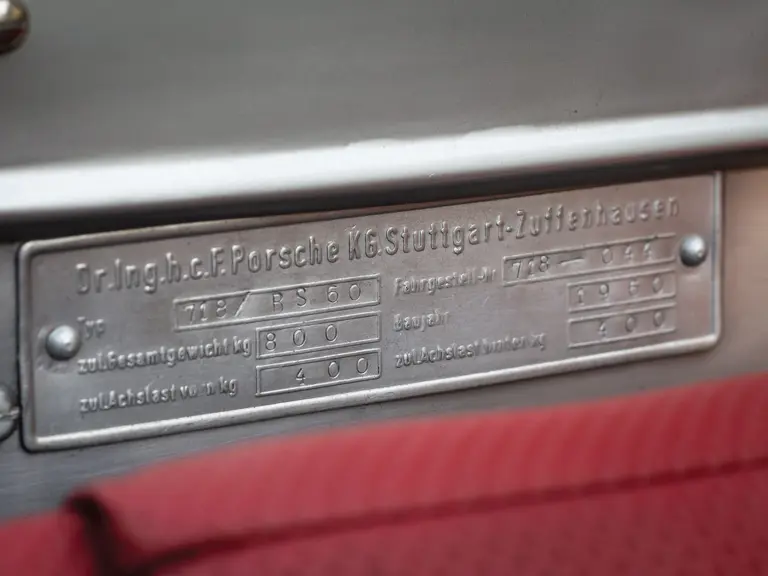


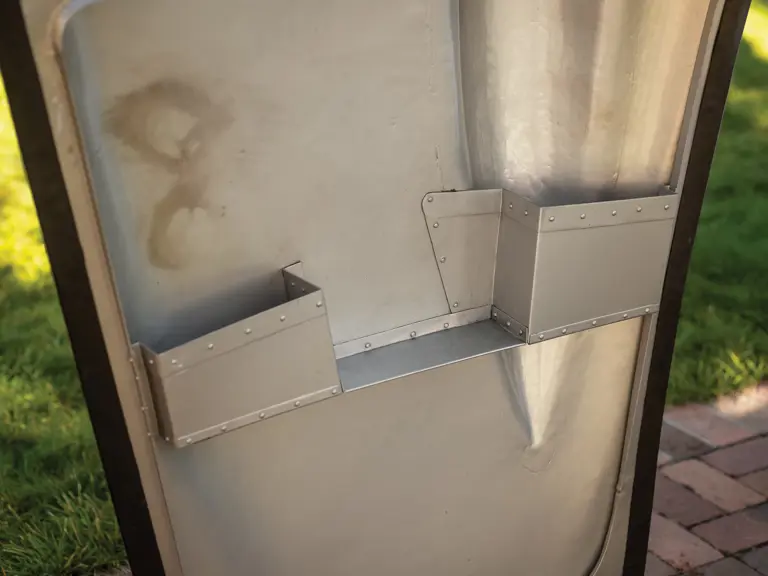

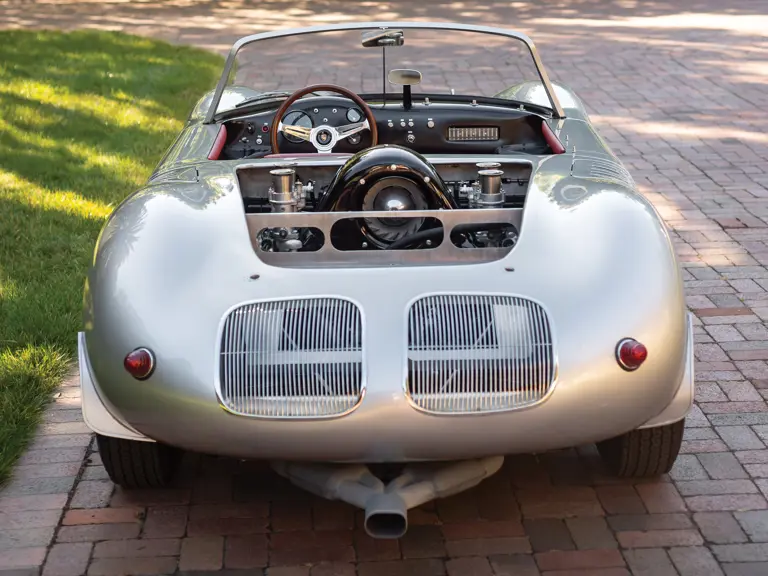
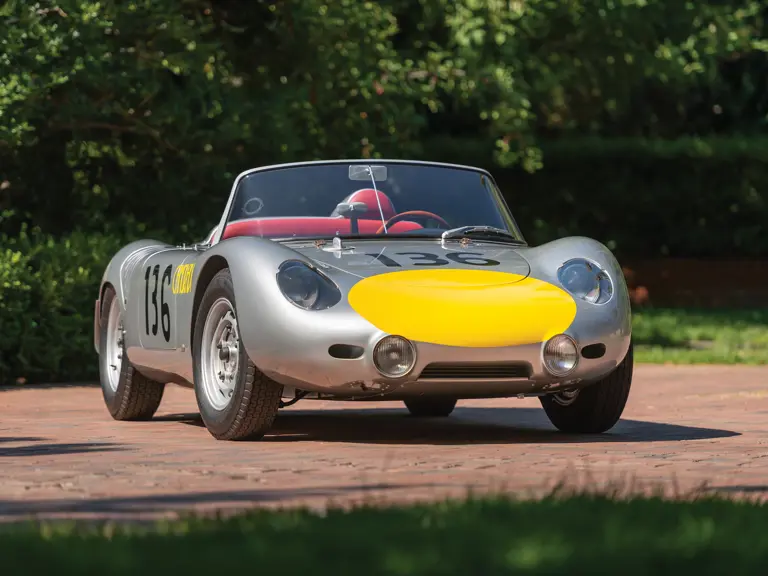

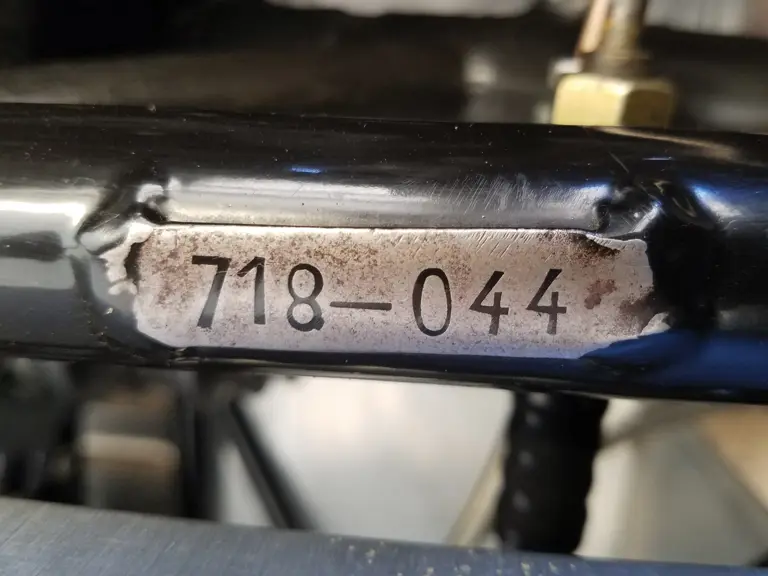


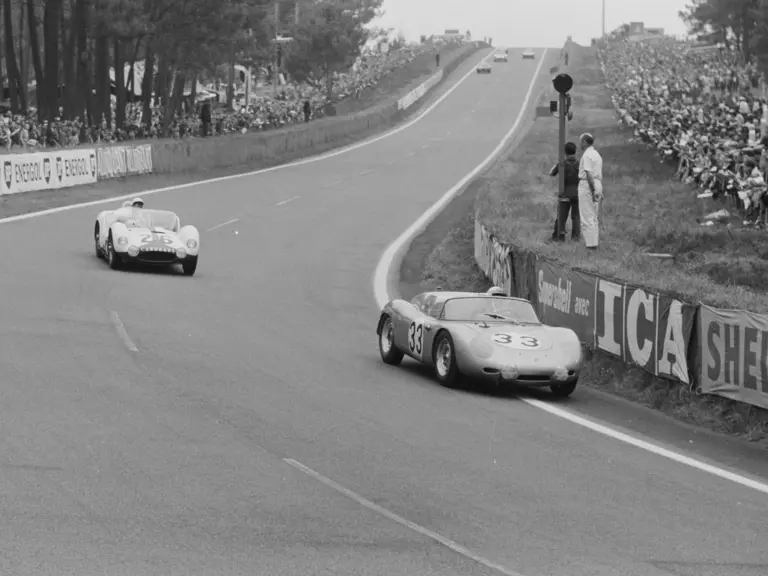
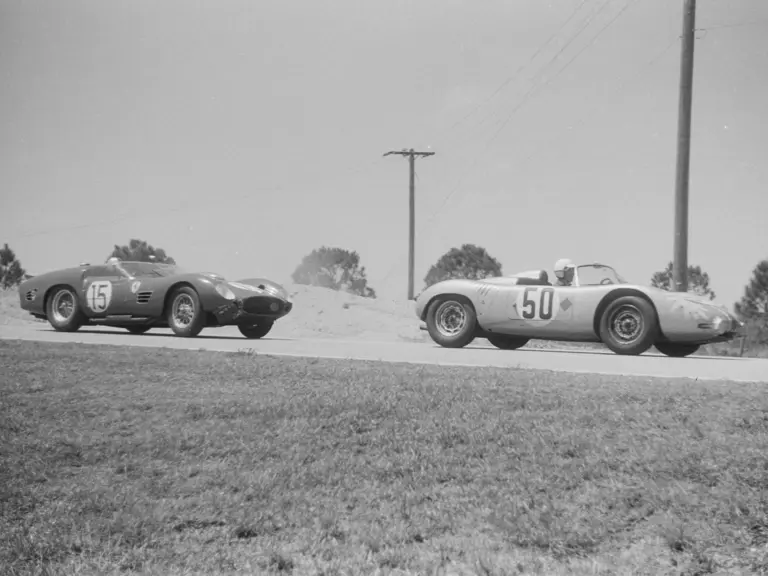
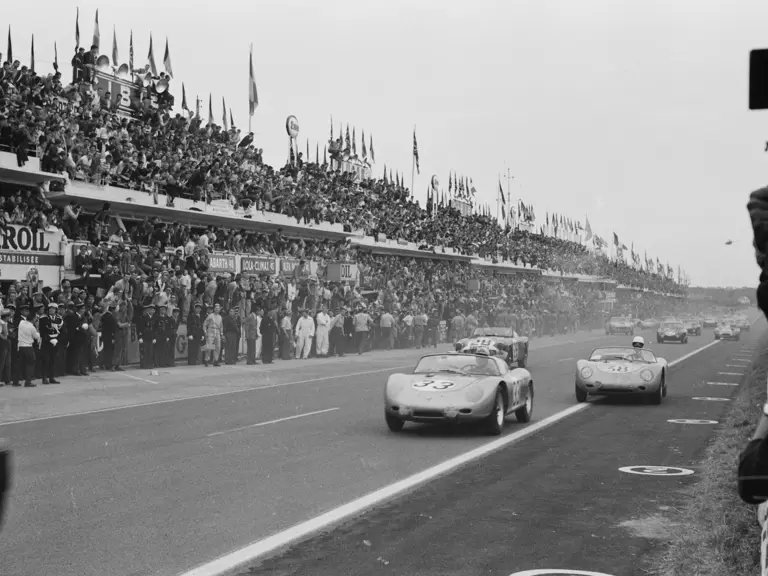
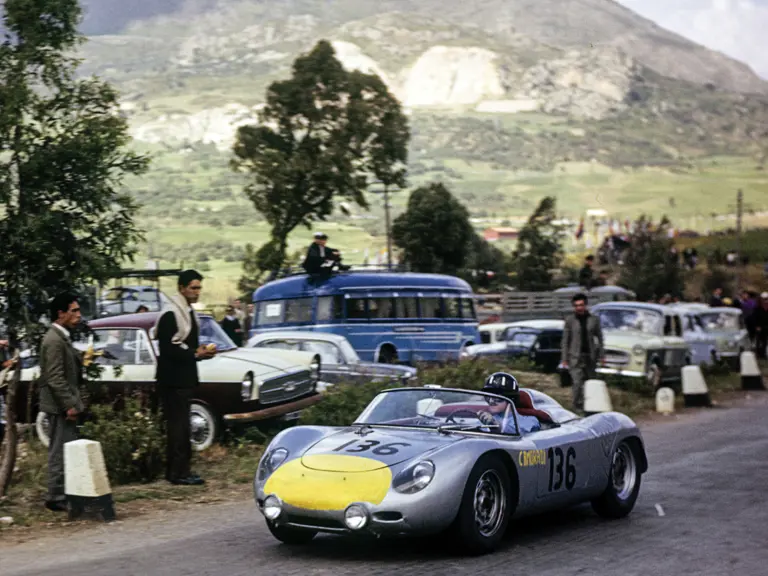


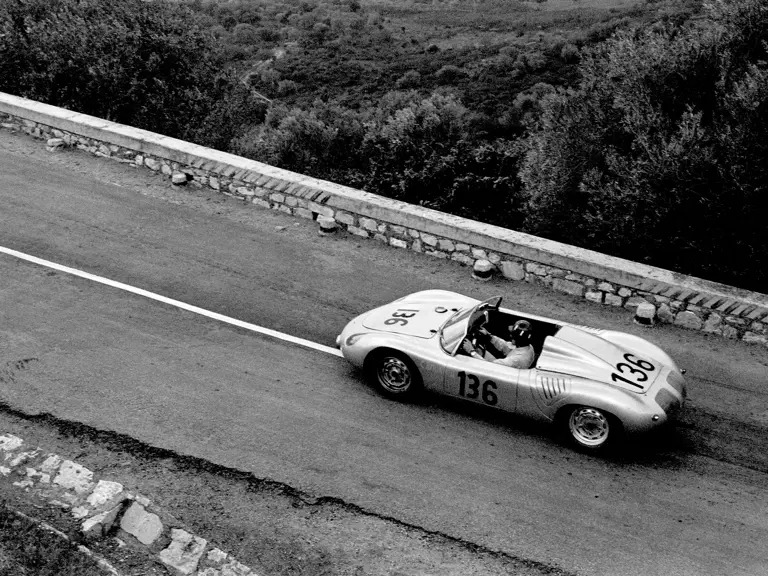
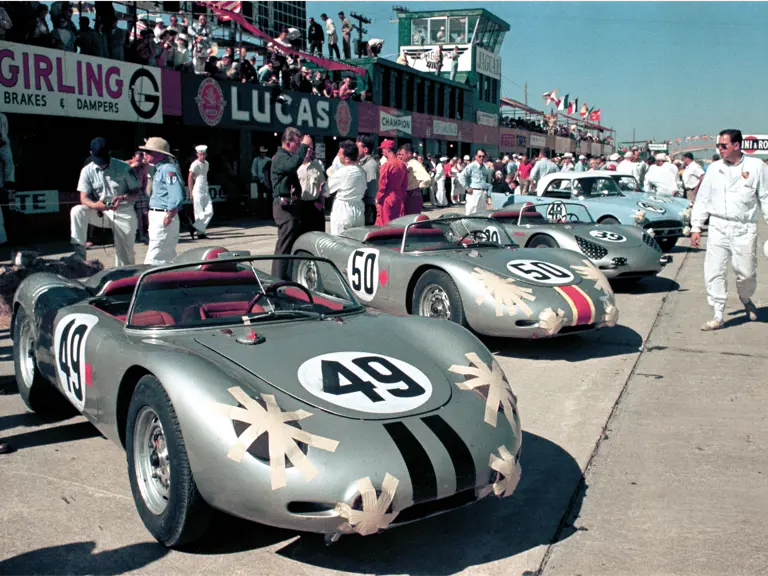
 | Monterey, California
| Monterey, California

